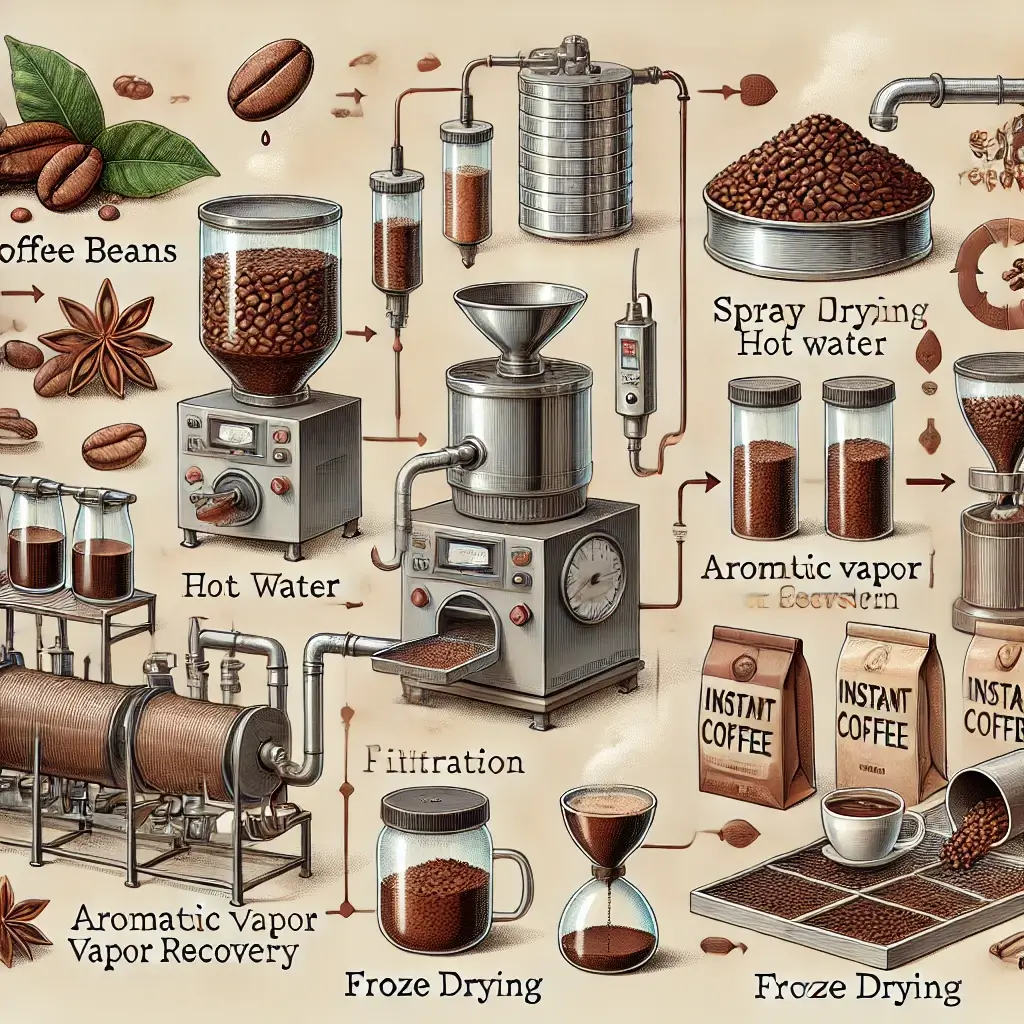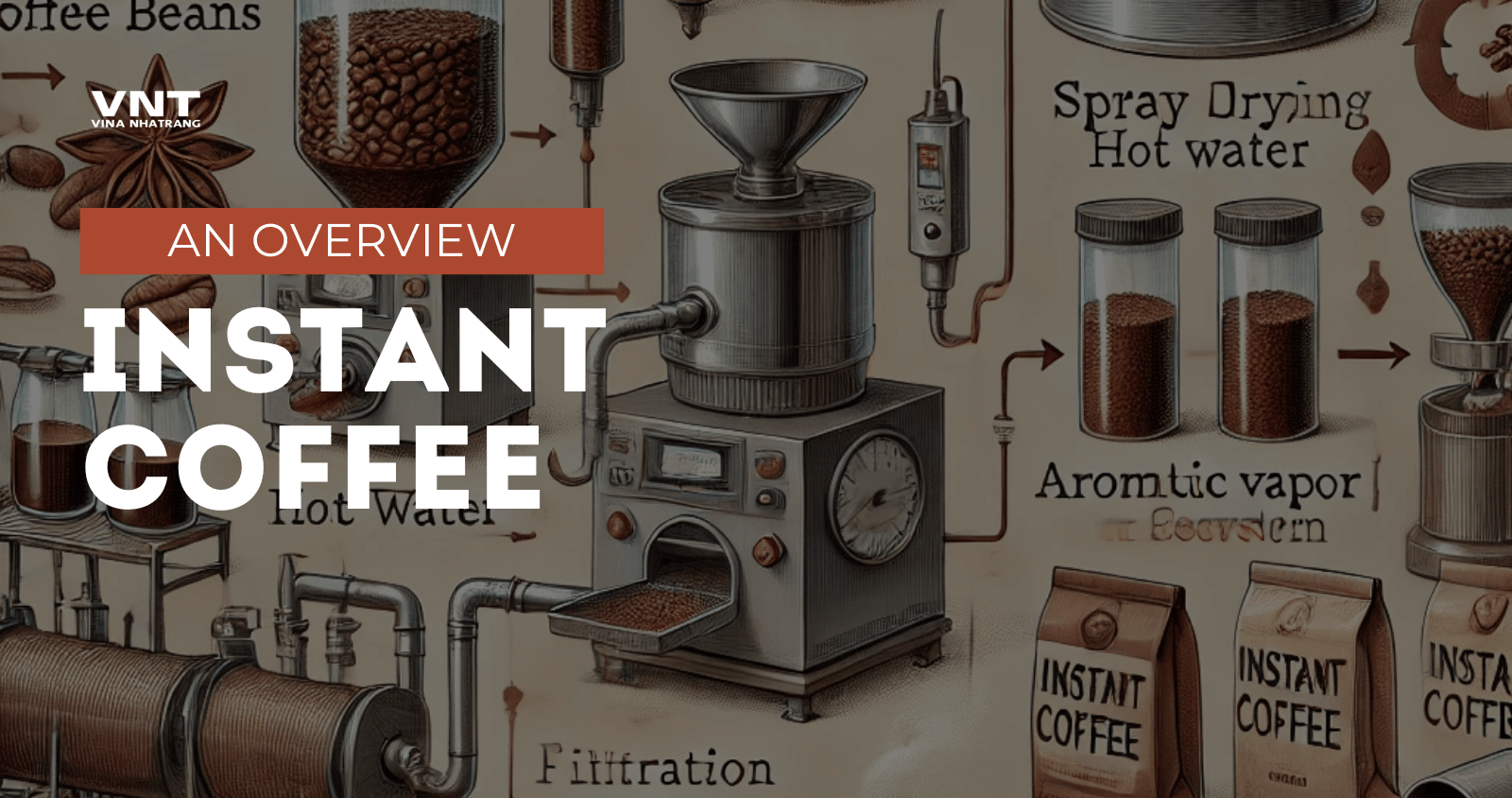Background
Instant coffee has become a staple in many households, providing a fast and easy way to enjoy a cup of coffee without the need for brewing. It is essentially brewed coffee that has been dehydrated and turned into a powder or granules, which can be rehydrated quickly with hot water. What sets instant coffee apart is its convenience—no grinding beans, no filters, and no waiting for a brew to finish.
Aside from ease of use, instant coffee also offers a longer shelf life than regular ground coffee, making it a perfect option for people who don’t drink coffee frequently or need a portable coffee solution for travel. Over the years, advancements in technology have significantly improved the taste and aroma of instant coffee, drawing even more people toward this quick, no-fuss alternative.
The Origins of Instant Coffee
The history of instant coffee dates back more than a century. The first attempts to create a soluble coffee product began in the late 19th century, with varying degrees of success. One of the earliest patents for a coffee concentrate was filed by Frenchman Alphonse Allais in 1881. However, it wasn’t until 1901 that a Japanese-American chemist, Satori Kato, developed the first version of what we recognize today as instant coffee.
Kato’s method was refined by American inventor George Washington, who mass-produced the first commercial instant coffee in 1910. World War I accelerated the popularity of instant coffee as soldiers needed a quick, easy way to get their caffeine fix in the field. The industry further expanded during World War II, when instant coffee became a staple for troops, boosting its appeal in the civilian market after the war.
The post-war era saw significant innovations in production techniques, resulting in higher-quality products. In 1938, Nestlé launched Nescafé, a breakthrough in instant coffee production, using spray-drying techniques that would set the standard for the industry for decades. From then on, instant coffee rapidly gained a global market, evolving from a war-time necessity to a modern convenience.
Key Ingredients in Instant Coffee
The quality of instant coffee starts with the raw materials—specifically, the coffee beans themselves. Both Arabica and Robusta beans are commonly used in the production of instant coffee, with Robusta being more prevalent due to its stronger flavor and higher caffeine content. Arabica beans, known for their smoother taste, are used in more premium varieties of instant coffee.
The selection of beans plays a crucial role in the final product. For instance, Arabica beans contribute to a sweeter and more acidic flavor, while Robusta beans offer a more bitter, bold taste with a fuller body. Blends of the two are often used to create a balanced flavor profile in many commercial instant coffee brands.
In addition to coffee beans, water is another critical raw material used in the extraction and brewing process during manufacturing. Some companies also add small amounts of stabilizers, such as maltodextrin or antioxidants, to help preserve the product and enhance its consistency during storage and rehydration.

Instant Coffee Manufacturing Process
How Instant Coffee is Made
nstant coffee is made through a multi-step process that turns brewed coffee into a soluble powder or granule. Below is a breakdown of the key stages in the manufacturing process.
Explore more: Manufacturing Process of Instant Coffee: A Step-by-Step Breakdown
1. Extraction
The process begins with brewing coffee on an industrial scale. Coffee beans are ground and brewed in large batches using water. The brewing process is similar to how you would make coffee at home, but on a much larger scale, using high temperatures and pressure to extract the soluble compounds from the coffee grounds.
2. Filtration and Concentration
Once brewed, the liquid coffee must be filtered to remove any solid particles. This is usually done using mechanical filters to ensure that only the soluble coffee extract remains. After filtering, the liquid is concentrated to reduce the water content, often through evaporation. This results in a thicker, more concentrated coffee liquid.
3. Recovery of Aromatic Volatiles
One challenge in producing instant coffee is retaining the coffee’s natural aromas, which can be lost during the brewing and evaporation processes. Manufacturers use special techniques to capture these volatile aromatic compounds. These aromatic volatiles are collected during brewing and later added back into the final product, enhancing the aroma of the rehydrated instant coffee.
4. Dehydration
Dehydrating the coffee extract is a crucial step in creating instant coffee. There are two main methods used for dehydration:
5. Spray Drying
Spray drying is the most common method used in mass production of instant coffee. In this process, the concentrated coffee liquid is sprayed into a chamber of hot air. As the droplets of coffee hit the hot air, they rapidly dry and turn into a fine powder. This method is efficient and cost-effective but may slightly impact the flavor and aroma.
6. Freeze Drying
Freeze drying is a more premium method of dehydration, where the coffee extract is first frozen and then subjected to sublimation, a process where the frozen water in the coffee is removed as vapor without passing through the liquid state. This preserves the coffee’s flavor and aroma better than spray drying, producing higher-quality instant coffee granules.
7. Aromatization
After the drying process, the aromatic compounds that were recovered during brewing are reintroduced to the dried coffee powder or granules. This enhances the flavor and aroma when the coffee is rehydrated by the consumer, making it more similar to freshly brewed coffee.
8. Packaging
The final step in the manufacturing process is packaging. Instant coffee is packaged in moisture-proof, airtight containers to preserve its quality and prevent degradation from exposure to air or humidity. Packaging options range from glass jars and resealable pouches to single-serve sachets for on-the-go convenience.
Byproducts/Waste
The production of instant coffee generates a variety of byproducts and waste, though many of these materials are increasingly being repurposed or minimized as part of sustainability efforts.
- Spent Coffee Grounds: After coffee is brewed during the extraction process, the leftover grounds are one of the most common byproducts. These grounds can be used in several ways, such as composting for agricultural purposes, creating biofuels, or being incorporated into cosmetic products (due to their exfoliating properties).
- Water Waste: Industrial brewing processes use a significant amount of water, and the wastewater generated contains organic material from the coffee beans. Treating and recycling this water has become a priority in many production plants, helping to reduce the environmental impact.
- Carbon Emissions: Both the spray-drying and freeze-drying processes consume energy, contributing to carbon emissions. However, advancements in renewable energy and energy-efficient machinery are helping manufacturers lower their carbon footprints.
Companies are increasingly focusing on circular economy models where waste is either reduced or transformed into valuable byproducts. For example, spent coffee grounds have been used in the development of eco-friendly materials, and some companies are exploring methods to extract oils from coffee waste for use in cosmetics and biofuels.
Explore more: The Importance of Aroma Recovery: Why It’s Essential
What’s Ahead for Instant Coffee?
The future of instant coffee is bright, driven by both technological innovations and changing consumer preferences. Several trends are shaping the instant coffee landscape:
- Improved Taste and Aroma: As freeze-drying becomes more accessible and advanced, we can expect instant coffee to taste and smell even more like freshly brewed coffee. Some companies are already experimenting with single-origin instant coffee, allowing consumers to enjoy premium flavors from specific regions, much like they would with freshly ground coffee beans.
- Sustainability: With growing awareness of environmental impact, consumers are demanding more eco-friendly products. This has led to innovations in sustainable packaging (such as compostable sachets) and greater use of renewable energy in manufacturing. Some companies are also sourcing beans through fair trade practices to ensure ethical and environmentally conscious production.
- Customizable Instant Coffee: Emerging technologies may also allow consumers to tailor their instant coffee experience. In the future, we could see products that offer customizable levels of strength, caffeine content, and even added flavors.
- Ready-to-Drink Options: Another growing trend is the ready-to-drink (RTD) instant coffee beverages, which offer the convenience of instant coffee without even needing hot water. These drinks are typically sold in cans or bottles, and their popularity is expected to rise, particularly in the cold coffee category.
As instant coffee continues to evolve, it will likely maintain its position as a convenient and practical choice for coffee lovers, while also embracing innovation to meet modern consumer demands for sustainability, variety, and quality.
Further Reading and Resources
For those looking to dive deeper into the world of coffee production, innovation, and tips for enjoying the best instant coffee, you can find a wealth of information at vinanhatrang.com. Explore blog posts, expert articles, and guides to learn more about coffee’s journey from bean to cup, along with insights into the latest trends in the coffee industry.




